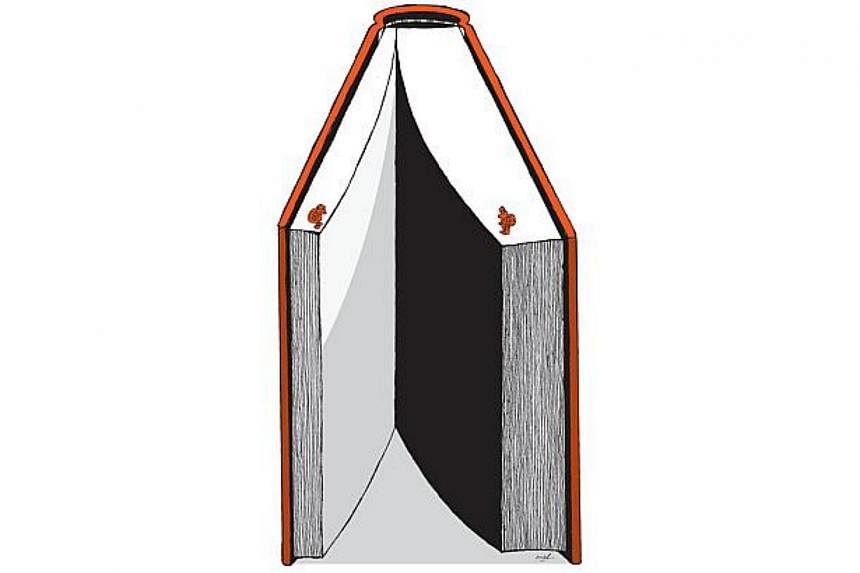LAST November, two parents sought my help in selecting a secondary school for their children. I recommended a few which their sons could have comfortably gained entry into, based on their Primary School Leaving Examination (PSLE) results.
Both parents didn't go with my suggestions. One, an accountant, listed Raffles Institution as first choice, while the other went for Anglo-Chinese School (Independent), hoping that the entry score for the school would come down.
 Neither parent bought my argument that the schools I had recommended were very good ones that would provide a solid education for their children.
Neither parent bought my argument that the schools I had recommended were very good ones that would provide a solid education for their children.
The accountant parent e-mailed to ask me if I had seen the facilities in RI - the air-conditioned classrooms, the swimming pool, tennis courts and various institutes. "It's very impressive. I would say even a little too much. There's no way the non-independent schools can compare to that." She went on: "Why would anyone buy MOE's line that every school is a good school?"
My recommendation of the four schools was not based on their facilities, but their programmes and their school leaders whom I had met.
Unfortunately, like the accountant mother, many parents latch on to the obvious when choosing a school - the facilities that these schools boast of.
On Monday, when The Straits Times revealed that the Education Ministry had reviewed the funding for independent schools, put curbs on their fund raising for campus upgrading and advised them to cut down on the use of air-conditioning, many parents who wrote in to me and The Straits Times supported the moves.
One parent, Mrs Annie Lim, said that even as she admired RI's facilities and programmes, she was struck by the unfairness of it all. "It's not fair that just a select group of kids get these top-notch facilities when the others don't," she said.
I must confess to having had similar thoughts when I visit the likes of RI and ACS.
Why is it that these students get to study in air-con comfort and learn how to swim or play tennis in their school's own sports complex, while their peers in non-independent schools swelter in the heat and have to use the public swimming pools? It just doesn't strike me as being fair.
What's the implicit message we are giving our young? That some children, especially the brightest or the children of the rich and well-heeled, deserve nicer schools than others?
Of course, the counter to this is to argue that these facilities were built with private alumni and donor funds, not state funds.
But there is also the issue of maintenance. Those in the know tell me it can cost tens of thousands of dollars a month to air-condition classrooms for a school. The cost is partially covered by the higher school fees that independent schools charge. I am told that schools may also dip into their reserves. But part of the maintenance cost will end up coming from the operating budget given to schools, which is based on the government grant for each student. This is taxpayers' money.
I have no argument with public money being used to provide an enriched curriculum to stretch academically able students further. After all, many will go on to play important roles in the country in many sectors.
But public money and alumni donations can, I feel, be used to narrow, not widen, the gulf between top schools and others.
For example, some parents have suggested that instead of donating to their alma mater, generous individuals or organisations could be persuaded to donate to the setting up of a sports complex shared by a cluster of schools.
Some alumni and parents have suggested that schools do more fund raising to cover the operating costs of these non-standard facilities. True, this would remove the thorny issue of using state funds to provide air-conditioning for an elite group of students.
But too much fund raising is not always a good thing. The Education Ministry said on Monday that it had received feedback on the burden of fund raising placed on parents, students and other stakeholders. It explained that it was in this context that it had advised schools to moderate their fund-raising activities and to take into consideration the cost of operating any additional facilities.
Some parents have also argued that the higher fees of about $300 a month charged by independent schools (compared with $22 for mainstream ones) should be enough to cover the higher costs of, say, having air-con rooms or maintaining swimming pools.
But the real cost of educating a student in schools with top-notch facilities and smaller classes is in the region of $30,000 a year - about 10 times what students now pay at independent schools.
That's the range of fees charged by international schools here, including Anglo-Chinese School (International), which receives no funding from the Education Ministry. ACS (International) charges Year 5 and 6 students $27,000 a year.
Bring down barriers
ONE parent who wrote to me said candidly that she had no issue with an independent school not having a swimming pool, since her son, like many of his schoolmates at RI, can swim in the swimming pool at their condominium home or at the country club.
To be sure, not every child in an independent school will have easy access to a pool at home. But it is a fact that in recent years, more students enrolling in the leading independent schools come from privileged homes. By providing extra facilities, the schools extend their privileges further.
As sociologist Vincent Chua, who studies social networks, has pointed out, the narrowing diversity in the top schools has a multiplier effect. Students born into families with wealth and social connections mingle with others like themselves, and are able to share resources and trade opportunities. The exclusive networks they form yield benefits beyond graduation when they go on to university and later on in the job market.
If Singapore wants to be an inclusive society, we have to ask ourselves if there is a better way to spend alumni and donor funds.
Why not spend on programmes that boost the chances of children from disadvantaged homes getting into schools that will stretch their horizons, instead of spending it on things that boost opportunities - or just creature comforts - for children who already have a socio-economic head start?
Already, there is a widening social gulf between students in the top independent schools and those in the neighbourhood schools. Former prime minister Lee Kuan Yew revealed in 2011 that half or more of students from brand-name schools had fathers who were graduates, compared with one in 10 in neighbourhood schools.
The dilemma for top schools and their alumni and supporters is this: Should they use their considerable networks and resources to buy facilities and programmes to benefit their own elite circle and entrench lives of privilege for another generation? Or on programmes to increase diversity, and to help other able students access these halls of learning?
It all turns on what kind of students they want to nurture. Smart youngsters who may see air-conditioned classrooms and swimming pools as their entitled lot in life, or smart and rugged, well-rounded students able to sweat it out with the rest.
This story was first published in The Straits Times on Feb 6, 2014
To subscribe to The Straits Times, please go to http://www.sphsubscription.com.sg/eshop/


